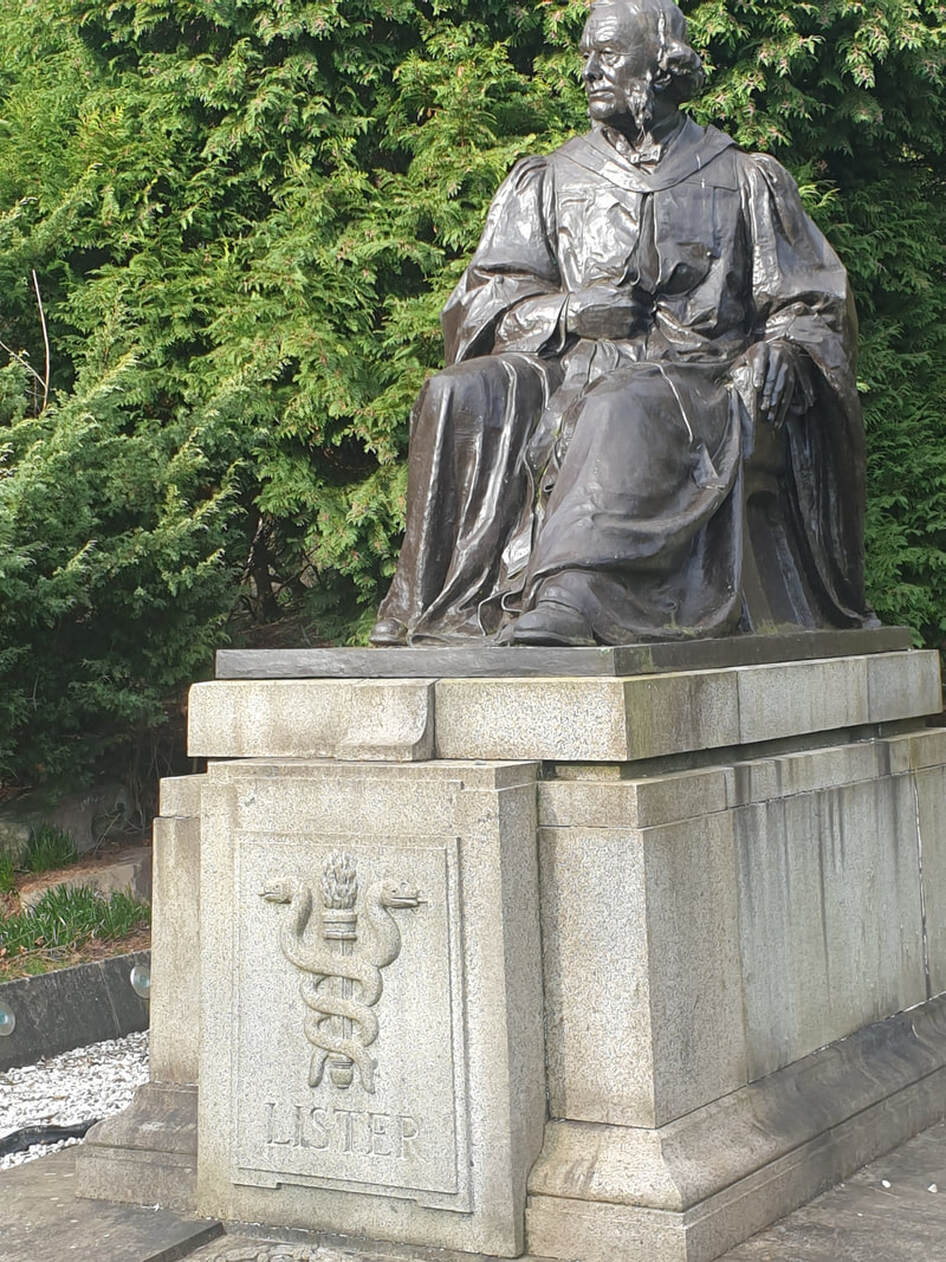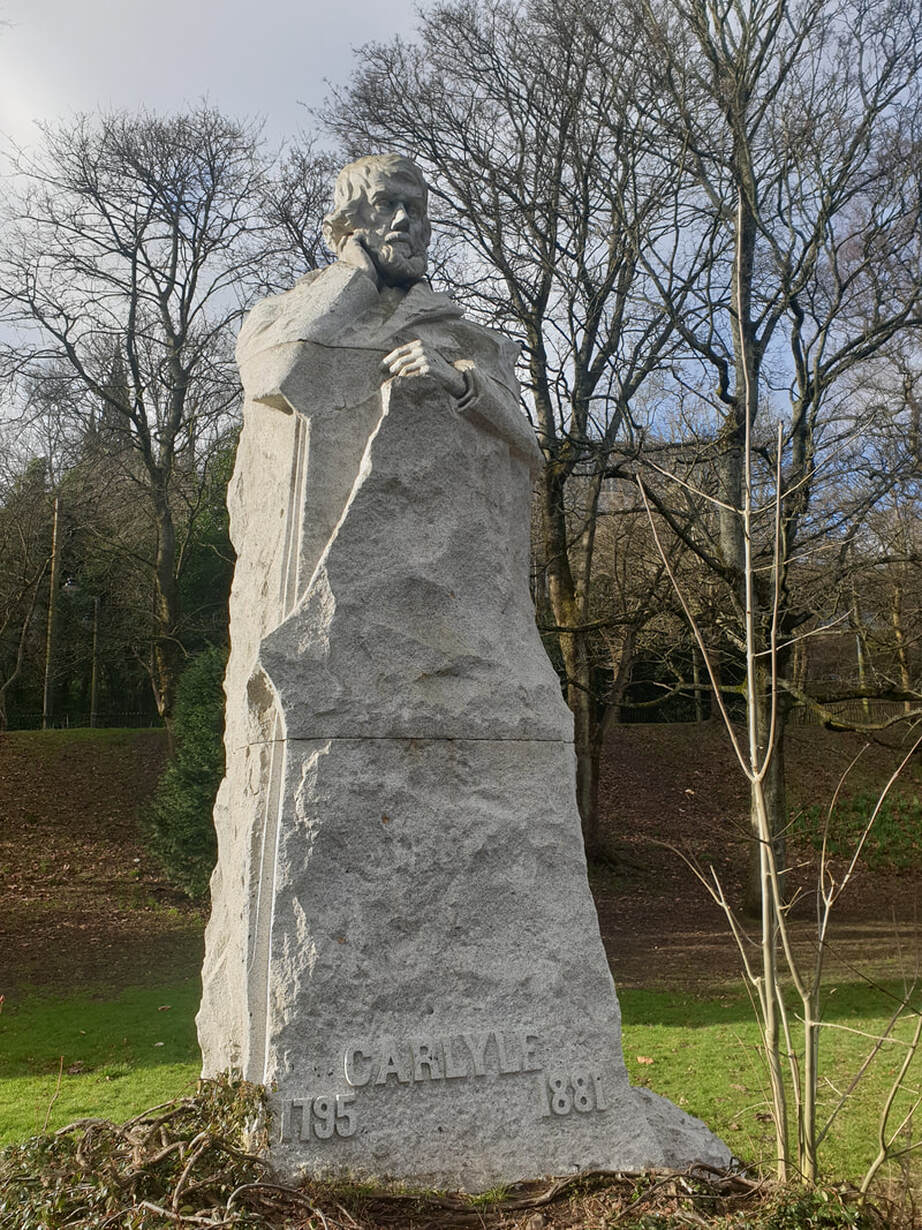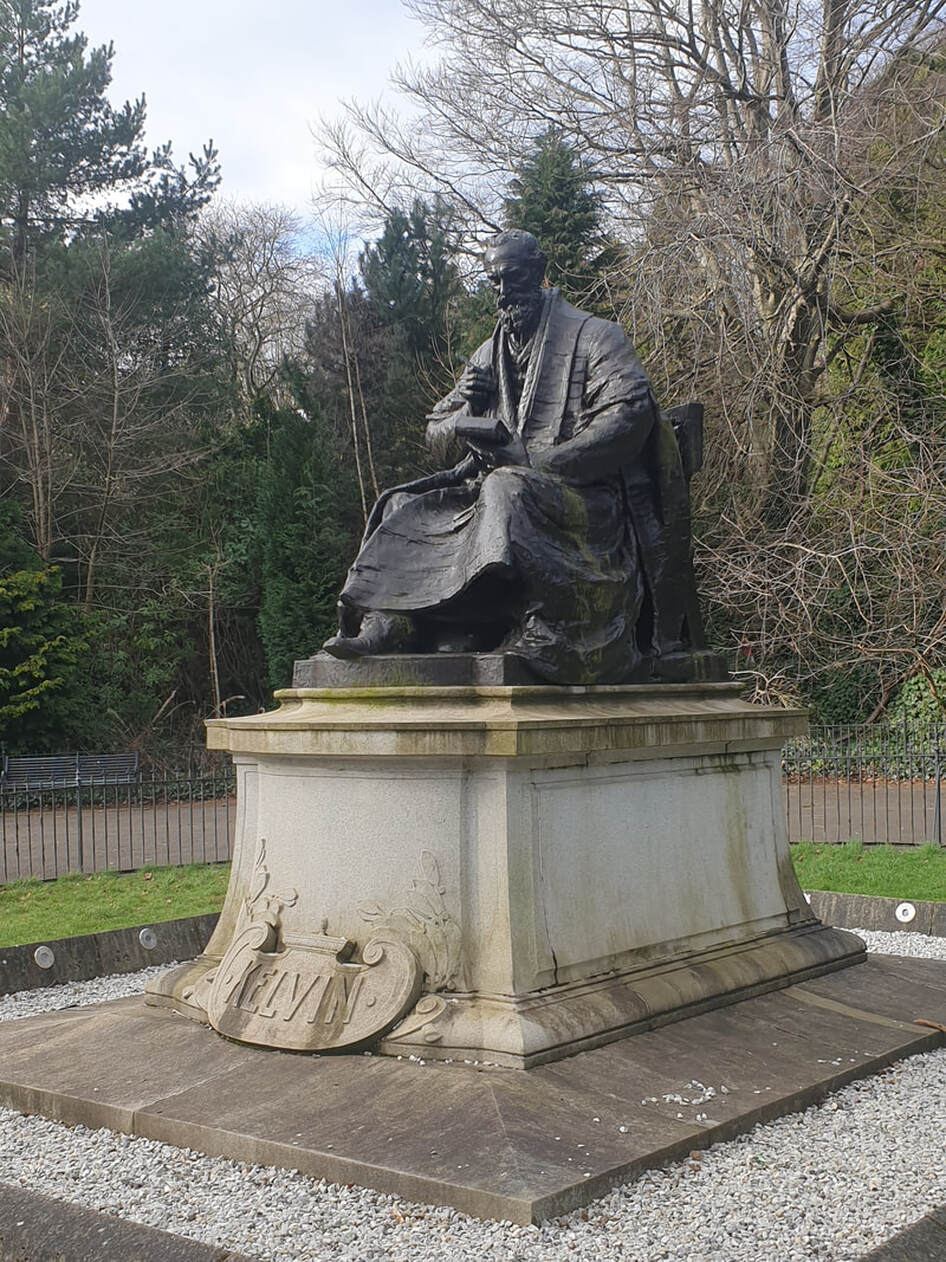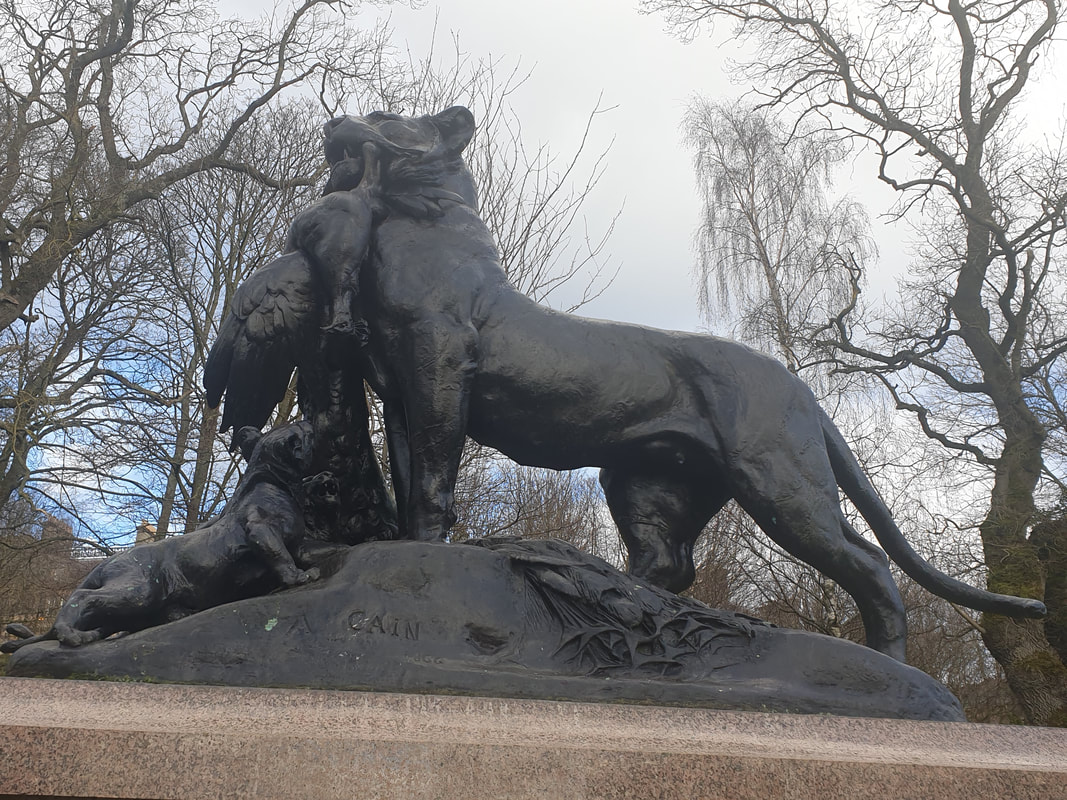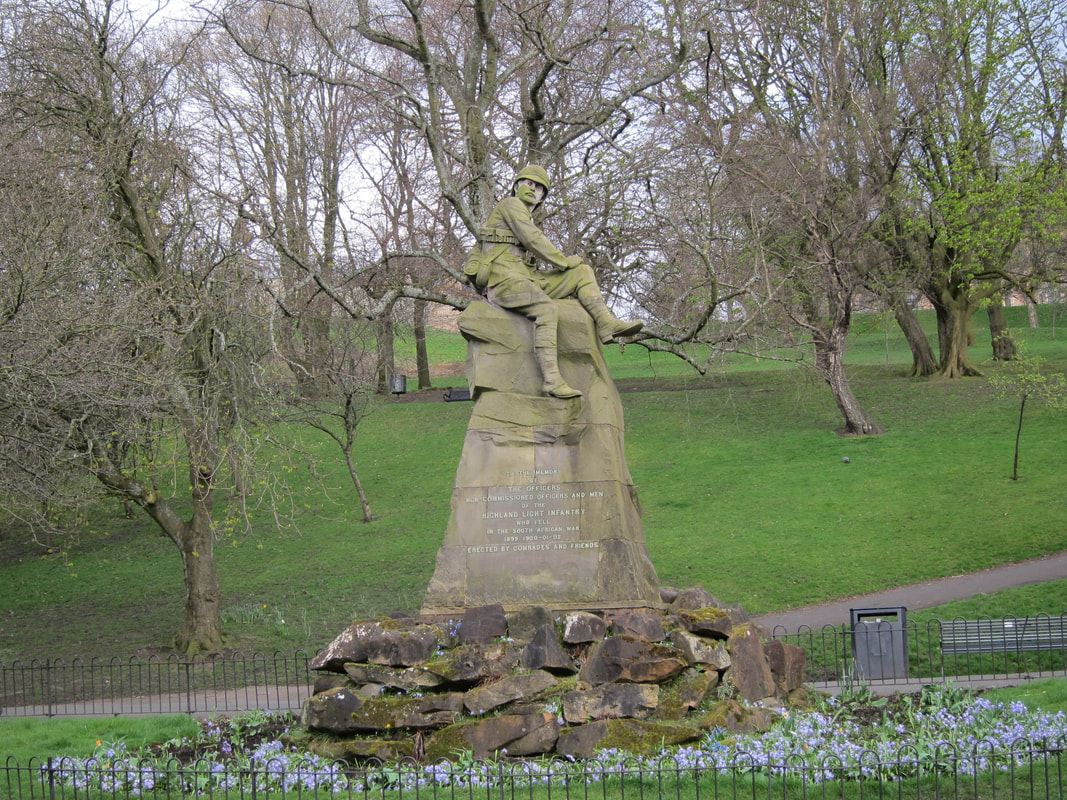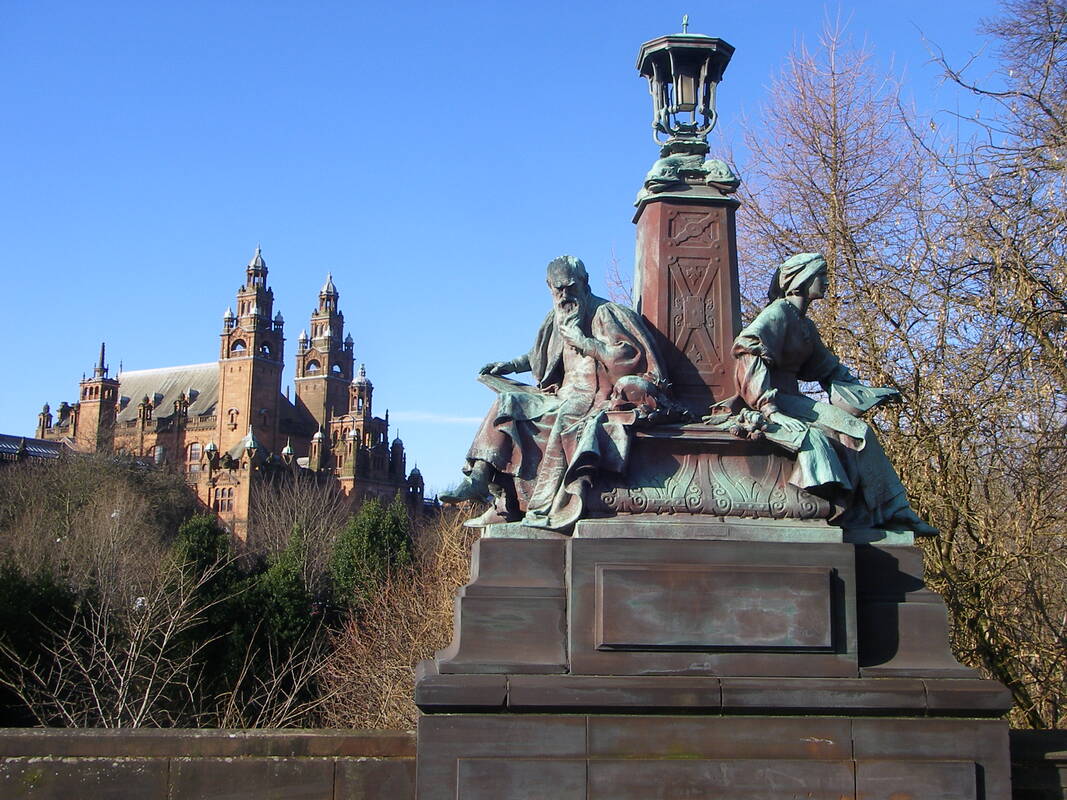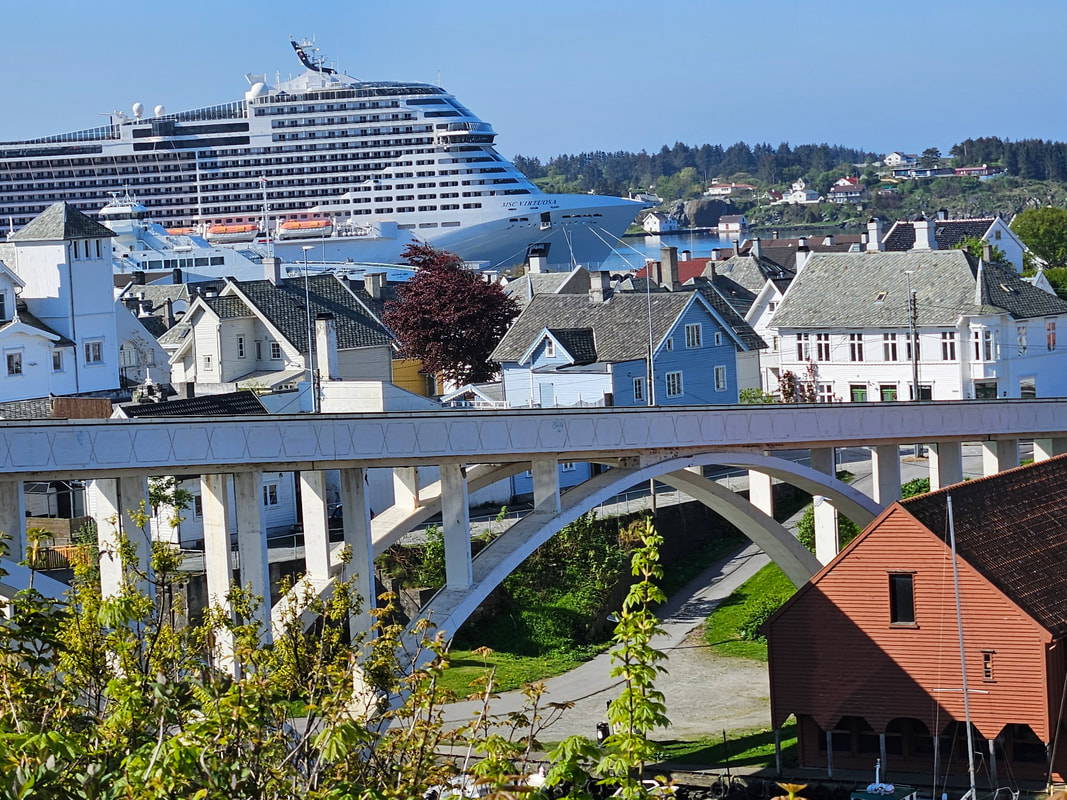Kelvingrove Park has so many wonderful statues.
They include physicist Lord Kelvin, writer Thomas Carlyle, Field Marshal Lord Roberts and chemist Lord Lister, as well as the Cameronians War Memorial and a memorial to the Highland Light Infantry.
They include physicist Lord Kelvin, writer Thomas Carlyle, Field Marshal Lord Roberts and chemist Lord Lister, as well as the Cameronians War Memorial and a memorial to the Highland Light Infantry.
A seated bronze statue of Lord Lister
Lister (1827 – 1912), the pioneer of antiseptics, resided in Woodside Terrace not far from the Park. In the year 1860 he was Professor of Surgery at the University combining this with work at the Royal Infirmary.
Lister (1827 – 1912), the pioneer of antiseptics, resided in Woodside Terrace not far from the Park. In the year 1860 he was Professor of Surgery at the University combining this with work at the Royal Infirmary.
The granite statue is erected in memory of the Scottish writer and historian, Thomas Carlyle (1795-1881), who is said to have rivalled Ruskin as the epitome of Victorian critical intelligence.
Lord Kelvin-- An acknowledged genius
A bronze statue of William Thomson, Also named Lord Kelvin (1824- 1907), Thomson proposed the Kelvin (Absolute) temperature scale [-273 degrees C], propounded the Second Law of Thermodynamics, was a consultant on the first sub-marine Atlantic telegraph cable and invented many types of electrical equipment.
Lord Kelvin entered Glasgow University at the age of 10 and became the Professor of Physics at the age of 22.
A bronze statue of William Thomson, Also named Lord Kelvin (1824- 1907), Thomson proposed the Kelvin (Absolute) temperature scale [-273 degrees C], propounded the Second Law of Thermodynamics, was a consultant on the first sub-marine Atlantic telegraph cable and invented many types of electrical equipment.
Lord Kelvin entered Glasgow University at the age of 10 and became the Professor of Physics at the age of 22.
The Bengal Tigress was the first sculpture erected in Kelvingrove Park. This statue was given to Glasgow by John.S. Kennedy of New York - a Glaswegian who migrated to USA and ended up a millionaire. The granite pedestal on the Kelvingrove Tigress is by Mossman. Another copy of this sculpture is in Central Park Zoo in New York.
My favourite statue in Kelvingrove. Stands proudly looking down the park. Lord Roberts was awarded a Victoria Cross during the Indian Mutiny. This horse is said to be a copy of Charger ‘Volonel’
There is a very similar monument in Calcutta.
Lord Roberts was known as the saviour of the British Empire. He rose to become the head of the armed services and died during the Great War at the retreat from the Marne, aged 82.The people of Glasgow bought on his first visit to the city in 1903.Under his command the Boers in South Africa were subdued and had already become a legend with his epic retreat from Khabul to Khandahar during the Afghan War of 1878.
There is a very similar monument in Calcutta.
Lord Roberts was known as the saviour of the British Empire. He rose to become the head of the armed services and died during the Great War at the retreat from the Marne, aged 82.The people of Glasgow bought on his first visit to the city in 1903.Under his command the Boers in South Africa were subdued and had already become a legend with his epic retreat from Khabul to Khandahar during the Afghan War of 1878.
The monument show`s a soldier of the Highland Light Infantry.
A memorial to the soldiers who fell in the South African ‘Boer’ War (1899-1902).
A memorial to the soldiers who fell in the South African ‘Boer’ War (1899-1902).
The Kelvinway Bridge sculptures above are bronze figures flanking bronze lanterns. The figures represent Philosophy and Inspiration (north-west), War and Peace (north-east), Navigation and Shipbuilding (south-east) and Commerce and Industry (south-west). These four figures were designed by Paul Raphael Montford in 1922.

